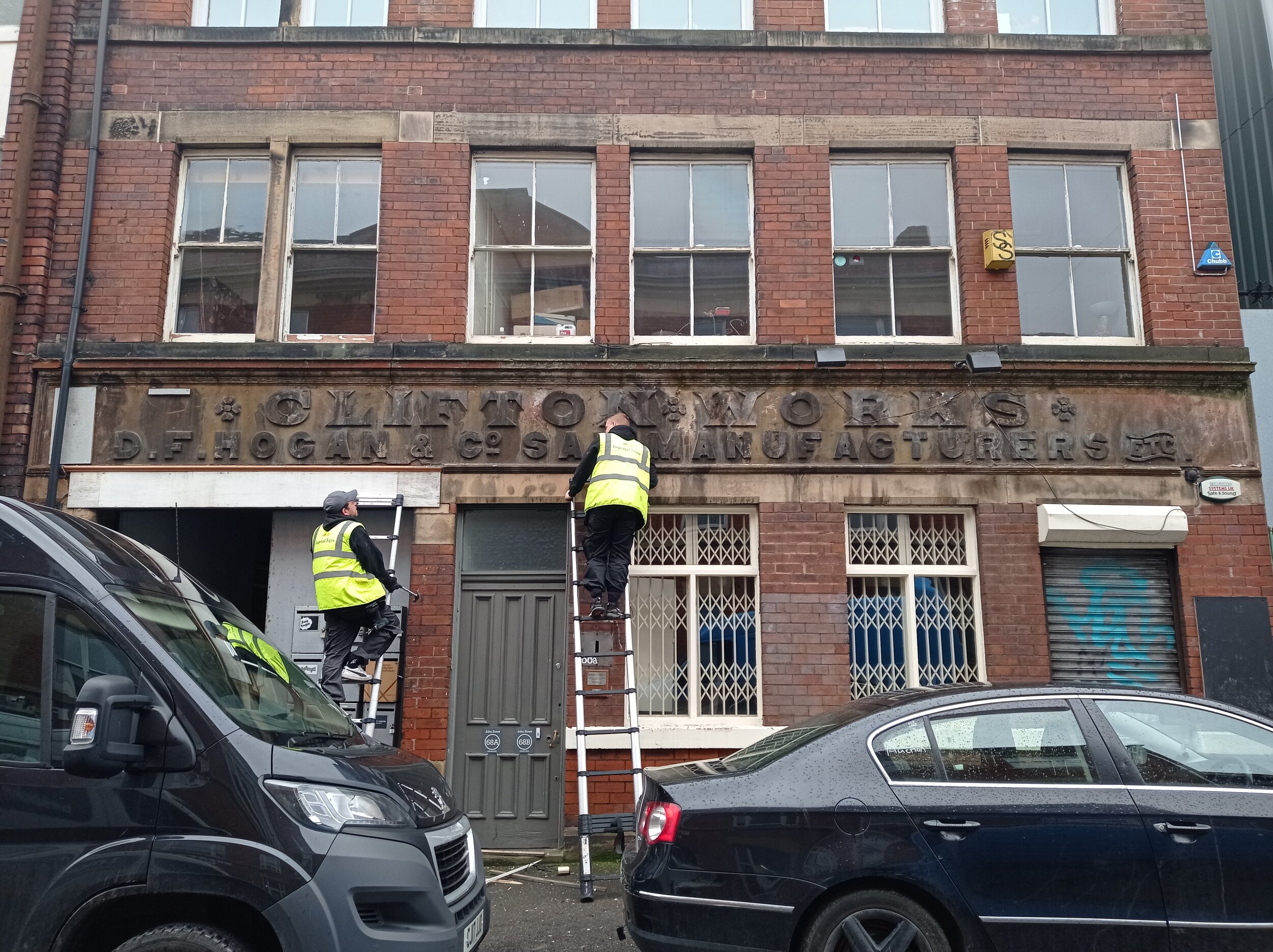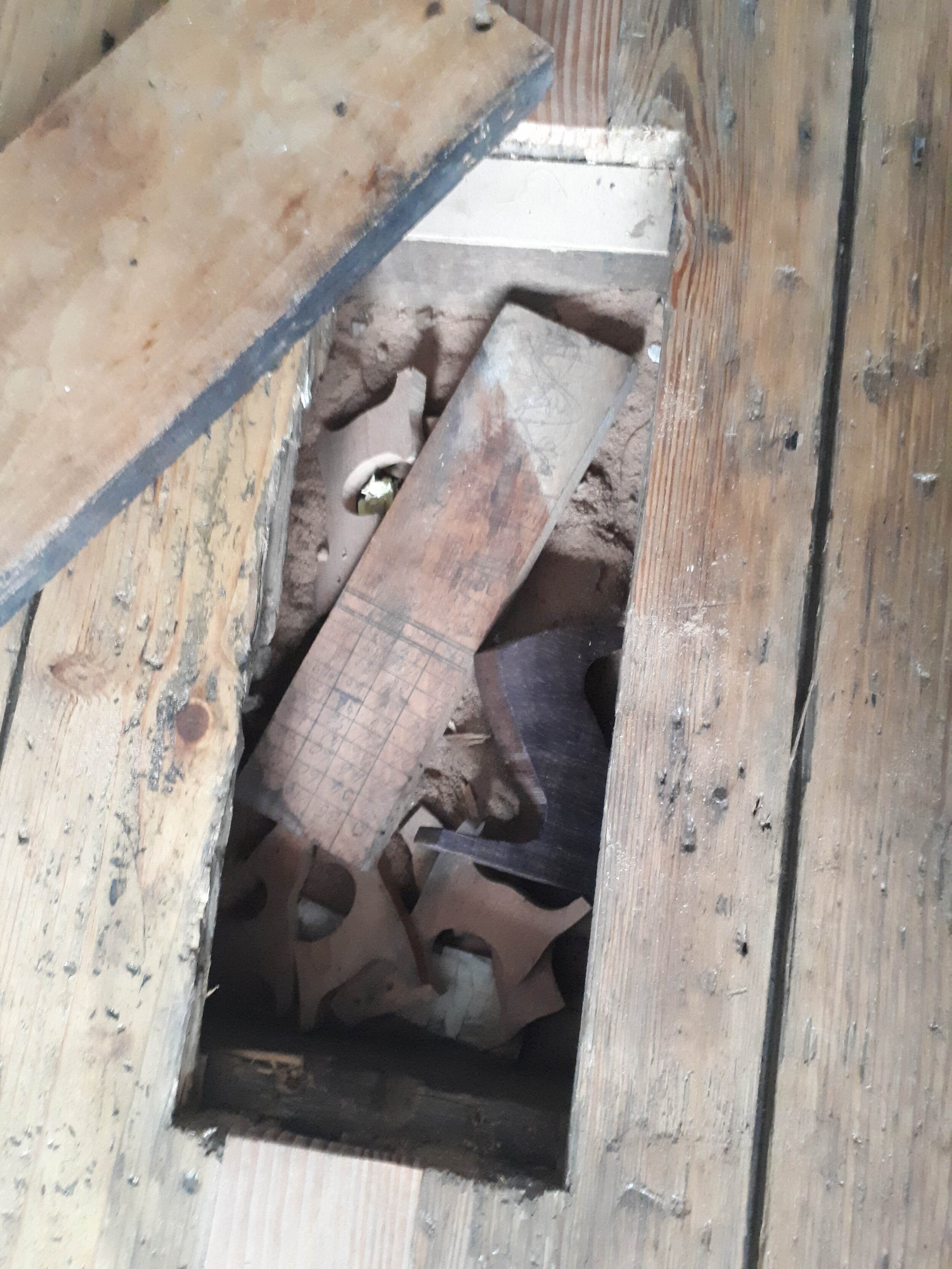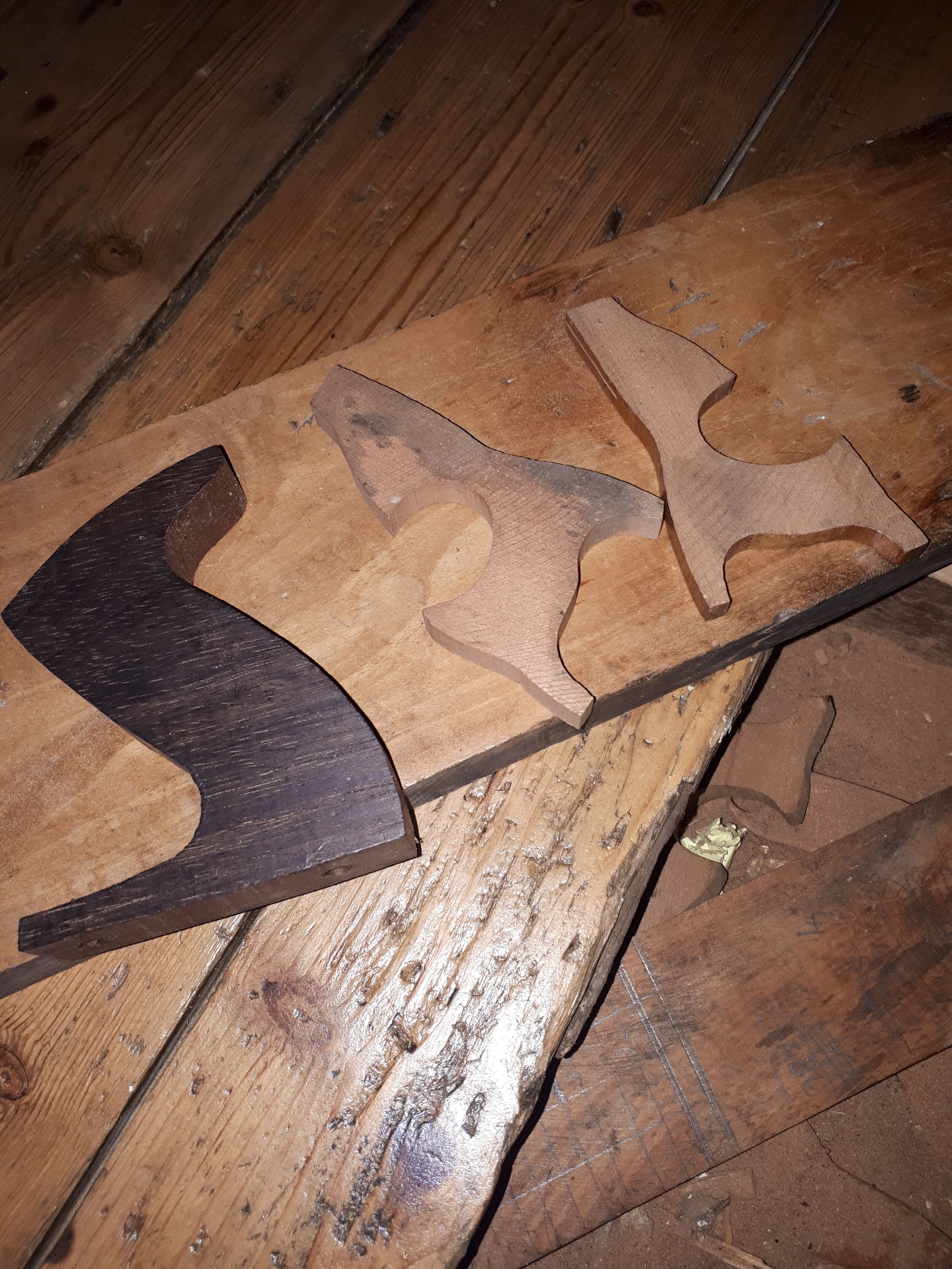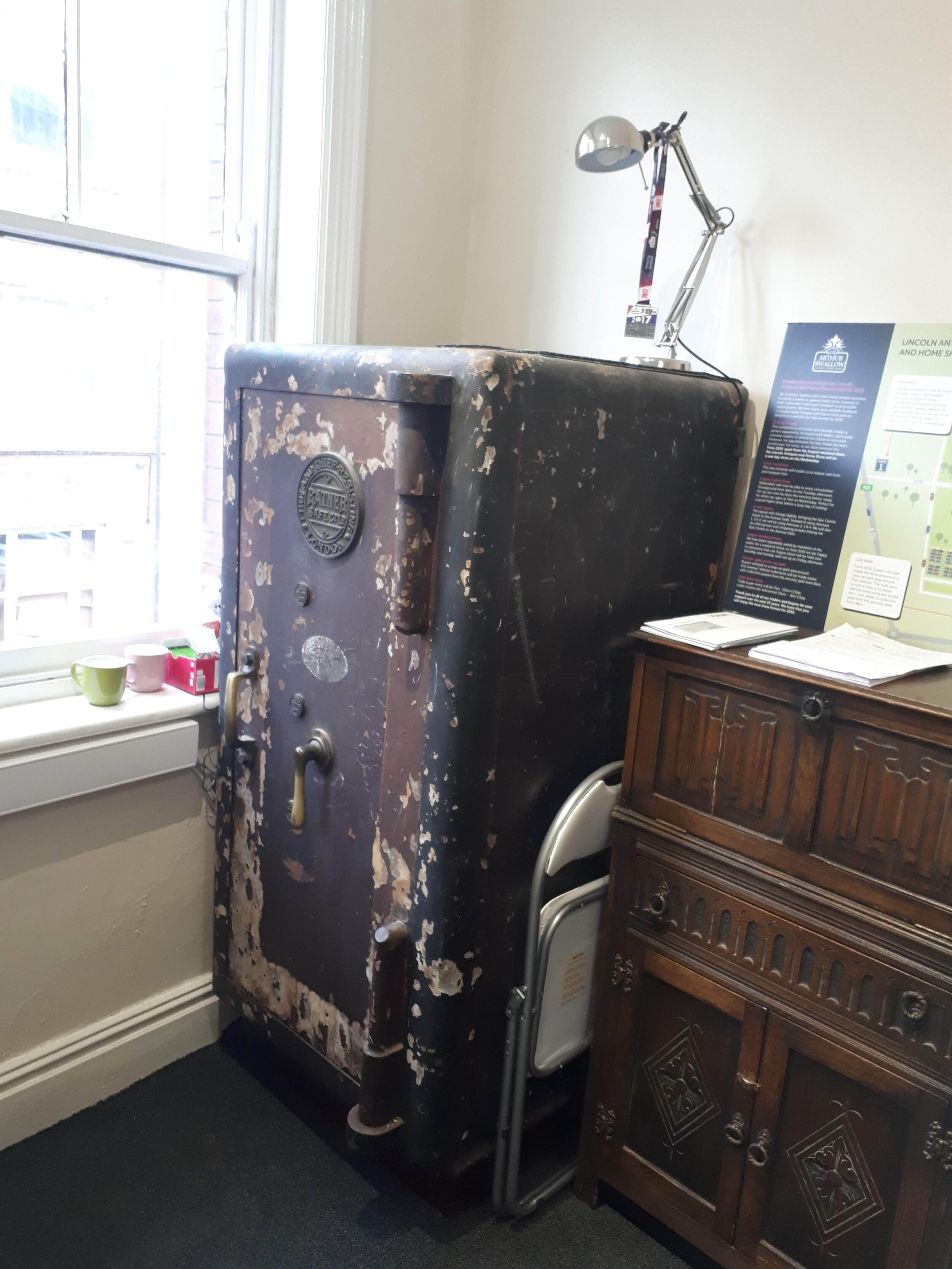A heritage day tour of Harland Works
Last week Harland Works took part in the national Heritage Open Day. I ran 3 tours round the building for people who wanted to look 'behind the scenes'. 40 or so people came to look around on Sunday.
In terms of history, we don’t actually have a whole lot to share (although if anyone knows more we’d love to hear about it).
Harland Works is not like our famous neighbour, Portland Works or the large and handsome Stag Works next door. It wasn't part of Sheffield’s famous cutlery trade. The information I have seen suggests we were a common-or-garden factory for making saw and tool blades out of the famous Sheffield steel.
We have the original plans for the building from 1910. These show where the engine room, grinding wheel, hardening shop, cutting room and warehouse were.
Our Tenants Skeet & Coutie found stashes of wooden tool handles and a handwritten tally of work done pencilled on scraps of wood, under their floorboards. Former tenants Cycles in Motion got sent a picture of a tool in a box marked ‘Made at Harland Works’. And when we did the original refurbishment of space for Norton Mayfield, we found lots of burn marks and worn patches of floor around what look to be machine settings.
I think there were probably many works like us in Sheffield and so we don’t get a mention in the various historical guides to cutlery and steel trade you find in Sheffield.
But we do have some fun anachronisms about the building now which date from the purpose it was originally built for.
In unit 68B we have what we think is the original safe. It’s huge - and not going anywhere. Any tenant renting that unit has to have it complete with a fully functioning, very secure, but impressively large safe.
In the floor of the Yoga Studio there’s a large hatch which - if lifted - reveals a small wooden staircase down to the next level (now Unit 68A - handily used as a bit of extra storage space).
In 74 John Street we have a huge ‘rock’ of concrete with iron running through it. We think this may have been ballast.
Throughout the building we have hatches allowing access to the ground floor from the top floor - presumably to allow heavy goods to be lifted in and out from the ground floor.
And we have some strange staircases that go nowhere with a door in the middle of the wall.
I think there is one thread of continuity between the building’s historical and modern day usage though.
The cutlery trade apparently depended on lots of smaller businesses, who specialised in different parts of the cutlery making process, grouping together in one building. Next door in Portland Works they actually had a conveyor belt to move the goods along between stages of manufacture. The term that’s used to describe these are ‘Little Mesters’. And these Sheffield steel ‘works’ would have been full of small businesses, or Little Mesters, then.
Nowadays Harland Works is also full of small businesses. They are not connected by the cutlery trade, but they do share the building as the base for their businesses - as Little Mesters used to do when the works were first built.
Today’s owner-run small businesses are at the forefront of a very modern trend. Micro businesses, with the means of production and routes to market made affordable on a small scale because of the internet, are creating the bedrock of our modern economy.
We have over 20 small businesses at Harland Works, employing collectively somewhere between 50 and 60 people. These businesses have settled into the building and adapted their corner making it fit for the purposes of their practice: from dusty work in oil paint, wood and clay, to hygienic cleanliness of a modern bakery or tattoo parlour. From traditional offices for IT companies, theatrical production companies and architects, to spaces which work for knitting pattern design, counselling, digital animation, product design, video editing and bow and musical instrument making, the building fits them all.
And so, just as it did when it was designed and built as one of Sheffield’s many steel works, Harland Works probably still makes up an unglamorous, but practical, functional and important part of Sheffield’s economy.






